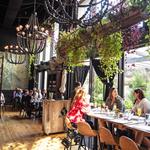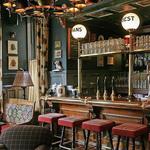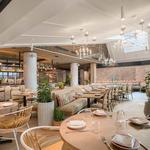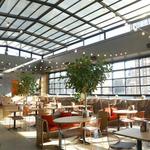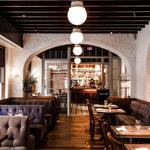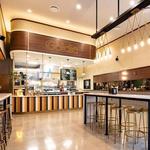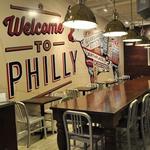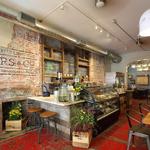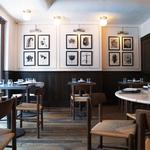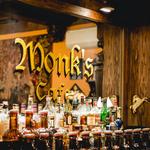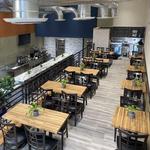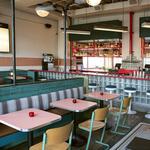Nick & Abbe


Explore Philly

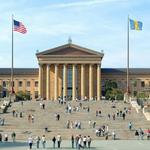
Philadelphia Museum of Art
The Philadelphia Art Museum is one of the crown jewels of the city. The main building, which sits at the end of Benjamin Franklin Parkway, was established in 1876 as part of the city’s Centennial Exposition, the first World’s Fair in the U.S. The museum’s collection holds over 240,000 artifacts, objects, and works of art, including everything from sculpture and paintings to armor, and decorative arts. Check out the view of the Schuylkill River and Boathouse Row behind the museum and, of course, the steps at the front that Rocky made famous. Don’t miss the museum’s other two buildings, The Perelman Building, and Abbe’s favorite, the Rodin Museum.

Independence Hall
Independence Hall is where both the Declaration of Independence and the United States Constitution were debated and signed by America's Founding Fathers. Across the street sits the Liberty Bell, which is cracked, but still cool. Both of these sites are free to the public but Independence Hall does require timed tickets. Further down Independence Mall is an open-air recreation of the President’s House, the nation’s first executive mansion, where George Washington and John Adams lived during their terms, and the National Constitution Center, a museum devoted to, yes, the Constitution. Also nearby: the Betsy Ross House, Elfreth’s Alley (an extremely narrow street that has looked more or less the same for almost three centuries), the African American Museum in Philadelphia, Carpenters’ Hall, the Museum of the American Revolution, the Merchant Exchange Building, the National Museum of American Jewish History, and Ben Franklin’s grave.

The Bourse Food Hall
If you’re touring around Independence Mall and get hungry, pop into The Bourse. Founded in 1891 by George Bartol, The Bourse was the first building in the world to house a stock exchange, maritime exchange, and grain-trading exchange simultaneously. Today, the historic space has been repurposed into an internationally-inspired food hall featuring favorites such as fried chicken from Freebyrd and street tacos at Rebel Taco.
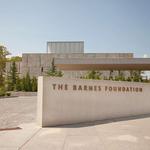
Barnes Foundation
Philadelphia art collector Albert C. Barnes (1872–1951) collected some of the world’s most important impressionist, post-impressionist, and modern paintings, including works by Renoir, Cézanne, Matisse, Van Gogh, and Picasso. Dr. Barnes was a strong supporter of progressive education and social justice and believed people from all walks of life should enjoy art. Abbe’s late father, Rick, adored this museum.
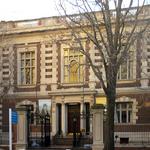
The Mütter Museum at The College of Physicians of Philadelphia
Looking for a museum off the beaten path? Take a spin through this museum of medical history, which offers collections of anatomical specimens, models, and medical instruments. Started through a donation from American surgeon Thomas Mütter, MD (1811–1859), the museum helps the public understand the mysteries and beauty of the human body and to appreciate the history of diagnosis and treatment of disease. Plus, where else can you see slides of Einstein’s brain or a malignant tumor removed from President Grover Cleveland's hard palate?
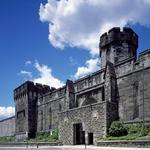
Eastern State Penitentiary
Once the most famous prison in the world, Eastern State Penitentiary now stands in ruin, filled with creepy, crumbling cell blocks and empty guard towers. Through an audio tour read by Steve Buscemi, you’ll hear the history of the prison, which, at one point, housed America's most notorious criminals, including bank robber "Slick Willie" Sutton and Al Capone. The prison also presents a number of exhibits that challenge modern mass incarceration and its effects on society.
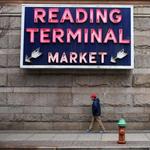
Reading Terminal Market
One of America’s largest and oldest public markets, it first opened in 1893. Today, it’s home to over 80 merchants and is a veritable smorgasbord of incredible food. We suggest stopping in for an Amish soft pretzel from Miller’s Twist, a roast pork sandwich from DiNic’s, or ice cream from Bassetts — America’s oldest ice cream company, established in 1861. Bassetts was the first merchant to sign a lease at the Reading Terminal Market in 1892 and it is still owned and operated by the same family today.

Schuylkill River Trail
Looking to get a little exercise? Head to the Schuylkill River Trail, a 30-mile recreational path that runs from Center City Philadelphia, through Valley Forge National Historical Park and ends in Parker Ford, PA. The Schuylkill River (pronounced SKOO-kill), Dutch for Hidden River, is where the American, Industrial and Environmental Revolutions were born. The trail, which was recently named one of the best riverwalks in the nation by USA Today, is a great place for pedestrians, runners, and cyclists. Don’t skip the Schuylkill Banks Boardwalk, the 2,000-foot trail extension that runs from South to Locust Streets and allows users to literally walk or ride over the river, while taking in some of the best skyline views around.
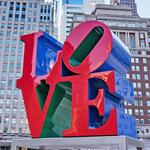
Love Park
During this weekend celebrating *our* love, make a pilgrimage to Robert Indiana’s iconic LOVE sculpture in John F. Kennedy Plaza. Indiana initially lent the aluminum artwork to the city in 1976, in honor of the Bicentennial. It was removed two years later but after a public outcry, was reinstalled. Snap a selfie with the sculpture, then walk over to City Hall, which is topped by a 27-ton statue of William Penn designed by Alexander Milne Calder. Arrange to take a tour of the interior and exterior of the building – it’s an incredibly ornate municipal building!
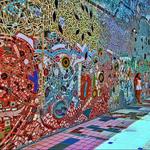
Philadelphia's Magic Gardens
Philadelphia’s Magic Gardens is a mixed-media sculpture garden that’s an explosion of mosaics, mirrors and found objects like bottles and bicycle wheels, all the work of artist Isaiah Zagar. After checking out the two indoor galleries and the bi-level outdoor garden, take a stroll down South Street, which has one of everything — tattoo shops, record stores, vintage shops, art galleries, and eclectic eateries.
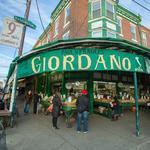
Italian Market 9th Street
The Italian Market is the largest, continuous outdoor market and runs along 9th Street from Wharton to Fitzwater Streets. The market began in the mid-to-late 1880s when Antonio Palumbo, an Italian immigrant, opened a boarding house in the neighborhood for other Italians and businesses sprang up to serve the growing community. Today, while many of the original Italian businesses remain, the market has diversified to reflect new waves of immigration, boasting some of the most authentic Mexican fare in the city, as well as Korean barbeque and Vietnamese Pho. Fans of the "Rocky" franchise will love taking a stroll through the vegetable stands, butchers, and Italian bakeries on S. 9th, where Rocky did his famous training run. The South Philly Sausage Fest — yes, really — happens on Saturday, September 17 from 12:00 PM – 7:00 PM at Broad Street & West Passyunk Ave.
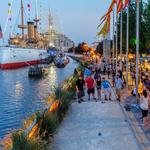
Penn's Landing
Take a walk along the Delaware River waterfront, take in stunning views of the Ben Franklin Bridge, and explore all there is to do. Check out the hammocks and food stalls at Spruce Street Harbor Park, step into the Independence Seaport Museum to learn more about Philadelphia's maritime history, or get in a kayak and see the river up close. You can walk through Cherry Street Pier, an open air mixed-use space that houses artists' studios, a garden, large-scale art installations, and the occasional food truck, or take the RiverLink ferry across the river to Camden and visit the Adventure Aquarium. Lots of family-friendly fun to be had here, including Fall Fest 2022, a free 2-day musical weekend experience, featuring live music, artists, and market vendors, at Spruce Street Harbor Park on September 16 and 17.
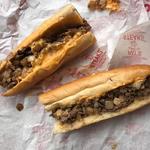
Cheesesteaks
Eating a cheesesteak is pretty much essential while visiting this city. The ingredients are all the same – a locally baked roll stuffed with chopped griddle-fried beef, topped with cheese (provolone, American, or Cheez Whiz) and served “wit” peppers and onions, or “witout.” Pat’s King of Steaks claims that its founder, Pat Olivieri, invented our signature sandwich back in 1930. Pat’s, on 9th Street and Passyunk Avenue, is open 24 hours a day, as is its mostly-friendly rival, Geno’s Steaks, across the street. But these two legends aren’t the only game in town. Try Jim’s or Ishkabibble’s on South Street, or Campo’s or Sonny’s Famous Steaks in Old City.
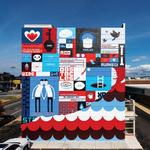
Murals
While you’re here, keep an eye out for all the colorful public art! Murals are a prominent part of this city’s identity and they’re all thanks to Mural Arts Philadelphia, the nation’s largest public art program, which is dedicated to the belief that art ignites change. What started as an anti-graffiti initiative in 1984 has grown to include over 4,000 works of art with 50–100 added each year. Take a tour with Mural Arts, or check out their website for an interactive self-guided tour based on your location. You’ll soon discover why Philadelphia is called the “Mural Capital of the World.”
